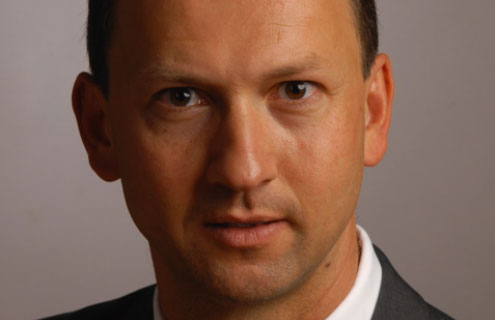Why have you started looking into distributed ledger technologies?
At Comyno we are the only dedicated provider in the securities finance space offering full-scale services in consulting as well as our own software products. Since its inception, our consulting arm has been one of our key differentiators to drive innovation—both in business and technology.
We’ve kept our eyes on blockchain for many years since discussions started around bitcoin. But in contrast to the majority of fintech companies hyping bits of technology without proper use cases, we spent more time on listening to our clients and market participants, observing their real needs, attendance and abilities to adapt to certain innovations. In the course of 2016 we felt a change in our industry has taken place—with willingness to adopt new infrastructures solving legacy problems on the rise.
What progress have you made?
We connected our current flagship product C-One, which from the start had been designed as a distributed system, with different blockchain and distributed ledger projects in our testing labs and achieved great results.
More specifically, we have coded smart contracts for a variety of lifecycle events of repo transactions, resulting in trades on the distributed ledger prototype network. We opened a repo trade and transferred the corresponding cash versus a bond as collateral, doing a re-rate and winding up the transaction through another smart contract executing the close of the trade. All this resulted in the exchange of the cash, including interest, and the security back to the original owner.
Which technology did you use?
We conducted our testing on different platforms, including Ethereum and the recently open-sourced Corda, which had been developed by R3 and incorporates the input of more than 70 financial institutions worldwide. We were surprised to discover that our C-One software platform and Corda share the same underlying messaging technology, which made it a very straightforward exercise for us to translate Comyno C-One’s securities finance transaction business logic into Corda contracts.
What are the possible applications for this type of technology?
Based on the positive prototype results in our labs, we’ve now started the development of a comprehensive solution in the area of direct central counterparty access. For the planned release of the middle of 2017, we envisage starting with a one-product concept with the possibility of ringfencing the digital world and utilising existing account structures and legal frameworks. More details will be shared in Q2 2017.
Look at the world as it stands at the moment—the technology itself and possibly the basic infrastructures will become freely available to anyone. As was observed in the business-to-customer space, apps and web services come firstly without cost, and it’s those companies knowing how to ‘play the consumer game’ who figured out how to make users happy while at the same time making a profit.
Applying this to our business, it’s the combination of our unique knowledge in both technology and the needs and obstacles of the broad network of different participants in securities finance markets that let us ‘know the game’. We are using this to translate our visions into technological reality to foster market efficiency and the fulfillment of regulatory requirements at the same time. That’s as detailed as it gets for now.
Will blockchain become the new normal for SFT business, or will it co-exist with current technology?
There are two ways of looking at it. We trust that our concepts are valid and our solutions will be adopted by the market. Naturally, from the start, we are just looking at small market fragments where we think we can add value without the rest of the world disrupting the technology and jumping on blockchain at the same time, which I doubt would happen anyway in its fullest scale.
I expect there to be a time of coexistence between the legacy world and blockchain/distributed ledger infrastructures. We have already shown that we are able to support the transition with our ready-for-blockchain software. As we are connecting legacy market infrastructures with C-One, we can act as the ‘enabler’ to move from the current to the future world, step by step. Investment in the current experiments will pay-off for Comyno and the wider markets.
← Previous interview
Standard Bank
Charl Bruyns
Next interview →
Broadridge Financial Solutions
Jerry Friedhoff
 Image: Shutterstock
Image: Shutterstock 